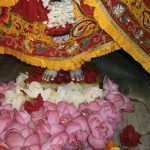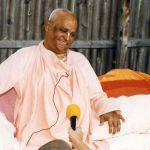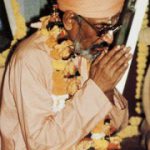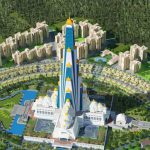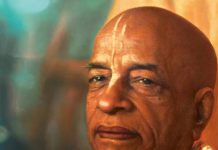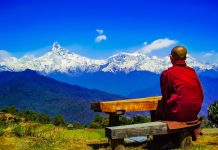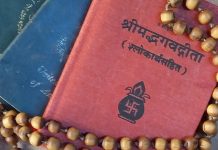Mattur, in Shimoga district, about 300km (186 miles) from the state capital, Bangalore, appears quite oblivious of the raging debate in India over the recent government order to replace German with Sanskrit in central schools.
Here, ordinary shopkeepers and agricultural labourers speak in Sanskrit – or at least understand it. Most children too speak the language fluently.
The phrases most heard on the streets here are “katham aasthi” (Sanskrit for how are you?) and “aham gachchami” (I am going).
Professor MB Srinidhi, a resident of Mattur, says the current controversy is unnecessary.
“Just like the European languages are spoken in Europe, we also need to speak in Sanskrit. The interesting aspect is that Sanskrit is a language that will help in understanding not just Indian languages but also German or French,” he told BBC Hindi.
Sanskrit belongs to the Indo-Aryan group of languages and is the root of many Indian languages.
In ancient India, it was the main language used by scholars and was sometimes referred to as devabhasha – the language of gods.
Today, it is spoken by less than 1% of Indians and is mostly used by Hindu priests during religious ceremonies.
Until the early 1980s, villagers in Mattur spoke the state’s regional language, Kannada, as well as Tamil because of the large number of labourers who settled here centuries ago from the neighbouring state of Tamil Nadu.
“Then there was a movement in favour of Sanskrit. Sanskrit had been criticised as the language of the [upper caste] Brahmins and suddenly displaced from the pedestal with Kannada,” said Prof Srinidhi.
“The priest of [the local religious centre] Pejawar Mutt gave a call to make Mattur a Sanskrit-speaking village. It took just two hours daily for 10 days for the entire village to start conversing in Sanskrit,” he added.
Since then, Sanskrit is being spoken not just by the Sankethi Brahmins of the 3,500-strong village, but also by communities from the socially and economically underprivileged sections of society.
Sankethis are a small community of Brahmins who originally came from the neighbouring state of Kerala and settled down here centuries ago.
There are only around 35,000 Sankethis in India and their language – also called Sankethi – is a mix of Kannada, Tamil, Malayalam and some bits of Telugu.
Today, 150 of the 400 students in the local Sri Sharada Vilasa school study Sanskrit as the first language, with English as the second language and Kannada or Tamil or any other regional language as their third language.


